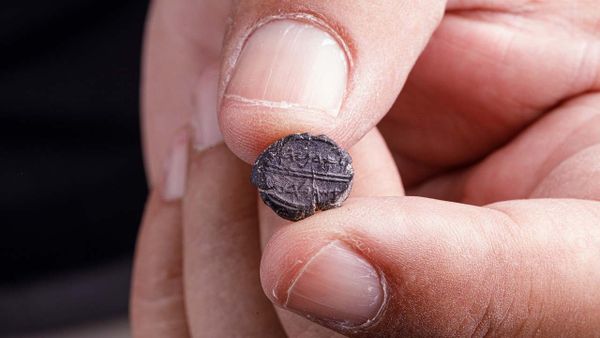Shiloh (שִׁלֹה) is a historic town situated in the lot of Ephraim, where Israel assembled under Joshua during the war of conquest (Joshua 18:1). It served as the location for the distribution of territories among the seven tribes that had not yet received their land allotments. A commission was dispatched to "describe the land into seven portions," and subsequently, the tribal inheritances were assigned by lot. In Shiloh, the Levites were allocated their portion within the territories of the various tribes (Joshua 18-21).
Furthermore, Reuben and Gad departed for their homes east of the Jordan from Shiloh. Notably, this town was also the gathering point for the tribes to confront these two tribes due to their misunderstanding of the construction of the Great Altar in the Jordan Valley (Joshua 22). According to the book of Judges 18:31, during that period, Shiloh was referred to as the "house of God" (בֵּית־הָאֱלֹהִים, beit haElohim) However, the precise timing of the sanctuary's relocation from Gilgal remains unclear. While the house of the Lord remained in Shiloh, it became a revered place of pilgrimage (1 Samuel 1:3). Samuel was brought to Shiloh and consecrated to God's service (1 Samuel 1:24). The sanctuary was under the oversight of Eli and his wicked sons, and through Samuel, the fate of their house was foretold. Subsequently, the capture of the ark by the Philistines, the downfall of Hophni and Phinehas, and the demise of the aged priest and his daughter-in-law swiftly followed (1 Samuel 3; 4).
The sanctuary in Shiloh is described as a "temple of the LORD" (heichal ADONAI, הֵיכַל יהוה) in 1 Samuel 1:9; 3:3), complete with doorposts and doors (1 Samuel 1:9; 3:15). Hence, it appears to have been a more permanent structure compared to the previous tent. However, it was likely destroyed, possibly by the Philistines. Consequently, the priests of Eli's house relocated to Nob, where they met their tragic fate by the order of Saul (1 Samuel 22:11). Although there is no direct account of the actual event, the calamity that befell Shiloh had a profound impact on the collective consciousness. The prophets effectively employed it as an illustration (Psalms 78:60; Jeremiah 7:12:14; 26:6).
The location of Shiloh (שִׁלֹה) is clearly indicated in Judges 21:19 as "on the north of Beth-el, on the east side of the highway that goes up from Beth-el to Shechem, and on the south of Lebonah." This description specifically refers to Seilun, a ruined site situated on a hill in the northeast of a small plain. It is approximately 9 miles north of Beitin (Bethel) and 3 miles southeast of Khan el-Lubban (Lebonah), to the east of the highway to Shechem (Nablus). A deep valley runs to the north of the site, separating it from the adjacent hills, which contain rock-hewn tombs. Further up the valley, a reliable spring can be found. Although vineyards no longer exist in the area, traces of ancient cultivation are visible on the terraced slopes.
The ruins on the hill consist of relatively recent structures. At the foot of the hill stands a deteriorating mosque. A short distance southeast of the hill is a building that appears to have been a synagogue, known locally as Jami` el-`Arba`in, or the "mosque of the Forty." Numerous cisterns can be found in the vicinity. Just beyond the northern crest of the hill, on a terrace, there is a rough quadrangle carved into the rock, measuring 400 feet by 80 feet. This may have been the site of "the house of the LORD" that was in Shiloh.












Member discussion